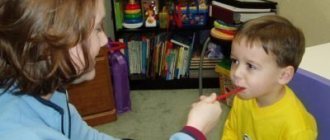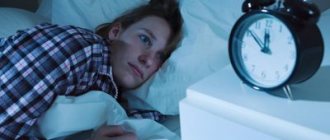Neurotic stuttering, also called logoneurosis, is a form of speech dysfunction caused by a psychological factor. This disorder is expressed by changes in speech rhythm, the occurrence of repetitions and hesitations. Neurotic stuttering is characterized by a convulsive syndrome of tonic and tonic-clonic type in the area of articulatory and respiratory-vocal muscles. It falls into the category of neuroses, since it is closely related to mental trauma. Logoneurosis occurs mainly in childhood, most often children 4-5 years old are susceptible to it. Moreover, the majority of patients with stuttering are male.
Etiology of the disease
The main prerequisite for the appearance of neurotic stuttering is a situation where mental trauma occurs. We can talk about either a sudden stressful situation caused by severe fear or an attack of anger, or chronic emotional stress, for example, against the background of a prolonged separation from loved ones or a difficult work environment. In the first case, most likely, the pathology will be short-term in nature, while in the latter case, stuttering becomes permanent, and the likelihood of concomitant neurological diseases is high.
In childhood, the appearance of neurotic stuttering is largely explained by an unfavorable speech environment in the family. This happens due to the acceleration of the child’s speech skills, bilingualism, information overload, etc. Some children begin to imitate a family member who stutters.
Hereditary predisposition also plays some role in the appearance of neurotic type stuttering. This may be explained by a genetic factor in the insufficiency of the speech apparatus.
The process of development of neurotic stuttering has not yet been fully studied. It is assumed that when logoneurosis occurs, a stable conditioned reflex connection is consolidated due to the formation of motor automatism. At the age of 2-4 years, the onset of neurotic stuttering is preceded by pathological fixation of speech hesitations of natural origin as a result of the development of speech. It is unfounded to talk about pathology during this period.
Neurotic stuttering (neurosis-like): what is observed, pathogenesis, differences
A pathological speech disorder that is functional in nature is neurotic stuttering. There is a clear connection with stimuli of a psycho-emotional nature. The course of the disease is wavy. Remissions are replaced by relapses, depending on the psychological state of the patient and the comfort of the surrounding conditions.
Neurotic stuttering
Neurotic stuttering is provoked by psychological reasons. It is expressed in speech pathologies in the form of changes in rhythm, clarity of pronunciation of sounds, repetitions, stops.
With neurotic stuttering, the patient begins to stutter as a result of convulsive contractions of the tonic, tonoclonic muscles of the articulatory apparatus.
In terms of functionality, stuttering is classified as a neurosis, so the pathology has received a second name - logoneurosis.
Logoneurological abnormalities are identified in children aged 4–5 years.
This period is the most active in the formation of speech skills. However, stuttering can occur at any stage of personality development, for no apparent reason. Men and boys are more likely to suffer from the neurotic form of stuttering.
Neurosis-like stuttering
The neurosis-like form manifests itself as a result of psychotrauma caused by damage to cerebral structures. It usually begins in children 3–4 years old. Adolescents develop neurotic symptoms associated with psychological discomfort from speech pathologies. Based on this, a group of neurosis-like stutters with neurotic layers is distinguished.
Impairments in the functionality of the central nervous system are observed in neurosis-like forms of stuttering. The main cause of deviations is organic pathology of the brain. Trauma is caused by a negative impact on the developing child's body. The source may be:
- natal trauma;
- infectious diseases suffered in early childhood;
- heredity;
- difficult pregnancy.
At the moment of formation of the pathology, the damage is a residual phenomenon. Severe speech impairments appear when pronouncing consonant sounds. Speech activity is high.
Difference between forms of violations
Neurosis-like stuttering begins to appear in children 3–4 years old without any visible prerequisites. Deviations are observed in psychomotor function. Hyperactivity syndrome often manifests itself. The pregnancy history includes difficult gestation, toxicosis in the last trimester, and birth asphyxia. Children are quick-tempered, difficult to discipline, fussy, and restless.
All these symptoms are combined into a cerebral syndrome. Speech development is delayed. Speech pathologies are clearly expressed. Vocabulary is slowly accumulating. The child cannot structure his speech consistently. Many sounds are pronounced with a delay.
Over the course of 1–6 months, stuttering occurs in waves, but there are practically no periods of speech without stuttering. If left untreated, the pathology becomes more complicated. The child uses dirty words and tricks.
Neurosis-like stuttering is accompanied by a slowdown in the development of motor skills of the motor apparatus.
Clinical examination reveals mild organic damage to the brain centers responsible for motor skills. A speech therapy study shows that the speech apparatus is normal, but its movements are limited.
Characteristic symptoms are insufficient mobility of the tongue, impaired coordination, and difficulties in finding articulatory forms. The tone of the tongue muscles is often impaired. Increased salivation in this form of stuttering is observed not only during a conversation, but also at rest.
In adulthood, rapid fatigue during oral communication is typical.
The main difference between neurotic stuttering and neurosis-like stuttering is the presence of a provoking factor.
In the neurotic form of stuttering, there is no dysfunction of the brain centers. Symptoms worsen under stress. If speech pathology does not disappear by a certain age, logophobia develops, which is reflected in behavioral deviations:
- patients refuse new acquaintances;
- patients try to talk less;
- Those suffering from neurosis use various tricks and cunning in their speech, and draw out their words.
Information is poorly absorbed, and persistent neurosis is observed. Symptoms depend on the neurotic form of stuttering. When fixed, additional symptoms are observed: sleep disorders, depression, neurasthenia, hypochondria, asthenic syndrome.
Pathogenesis of neurotic type
The reason for the development of the neurotic form of stuttering is a psychotraumatic situation:
- fright;
- tantrum;
- long-term stress;
- conflict situation;
- separation from a loved one for a long time.
Speech pathology can be short-term. In most cases, the symptoms are clearly expressed and reach transient mutational forms in children and adolescents. Chronic deviations are characterized by the consolidation of speech pathologies and additional neurotic disorders.
60% of cases of childhood neurotic stuttering are provoked by an unfavorable speech therapy environment in the family circle:
- heredity;
- bilingualism;
- boosting the child’s speech skills;
- placing high demands on the child regarding speech;
- excess information.
The pathogenesis of the disease has not been studied enough to speak with confidence about the causes of development. In a stressful situation, the pathology progresses due to disruption of the transmission of conditioned reflex impulses. Pathology is established in adults due to the automation of motor reactions. Children exhibit a natural hesitation in speech patterns, characteristic of the development of speech functions.
History of neurotic stuttering
The history of the neurotic form of stuttering does not reveal any anomalies. Psychomotor development corresponds to age. Most cases of childhood neurotic stuttering are characterized by early evolution of speech. Patients speak quickly, choking, swallowing endings and small words.
The disease is determined by its emotional background. Children suffering from the problem are impressionable, timid, anxious, impatient and touchy.
The deviation appears suddenly against the background of well-developed, correct oral speech. Adaptation in a team is often a stress factor. Stuttering of the neurotic type does not develop independently; it is accompanied by a number of other neurotic symptoms:
- phobias;
- enuresis nocturnal or daytime;
- impulsive-compulsive disorder.
If there is a strong psychogenic factor in the anamnesis, mutism is present - the child does not speak at all for some time. As soon as the central nervous system signals that there is no danger, the baby begins to speak again, but stuttering.
As the pathology progresses, additional signs of a neurotic disorder develop: tearfulness, overexcitability, irritability, sleep disturbances. By the age of 10–12, the picture is aggravated by pronounced neurosis due to awareness of one’s shortcomings.
Stuttering becomes overgrown with fear of speech failure, and the relationship with society is disrupted.
The history of neurotic forms of the disease identifies the following characteristics:
- early speech development in the phase preceding the onset of pathology;
- non-standard emotional development;
- the initial pathology is provoked by an acute psychogenic factor;
- convulsive manifestations of stuttering depend on the emotional state;
- standard speech with expanded phraseological units for certain
- psychogenic conditions that are comfortable for the individual.
Course of the disease
The anomaly can occur in 2 forms:
- progressive;
- recurrent.
The progressive course is characterized by mild symptoms. Stuttering is rare.
When the psychological situation changes for the better, patients experience attenuation of the main symptoms of a nervous disorder, which helps improve speech.
With a positive course, people who stutter have normal speech, without stopping, when the patient is interested in the topic of conversation, feels comfortable and relaxed. The form of the disease is highly treatable.
The recurrent course of the disease in adults is characterized by a complicated clinical picture, accompanied by disharmonious personality formation. Patients develop a unique pattern of judgment and perception of themselves in society. Over time, patients withdraw into themselves, OCD and various phobic disorders progress. The effectiveness of drug-pedagogical treatment is low.
Conclusion
Neurotic disease is triggered by stress. A stable destruction of speech is formed due to unfavorable psychological factors for the individual. Symptoms can be expressed clearly or fade and recur. It is observed in emotional individuals who are less resistant to stress.
The pathology develops at the age of 2–6 years. It has favorable and unfavorable types of flow. In the progressive (favorable) form, the symptoms go away completely when the psychogenic situation improves to a favorable one for the individual.
If unfavorable, the picture of the condition worsens and acquires additional symptoms of neurotic disorders.
Source: https://psyhoday.ru/nevroz/nevroticheskoe-zaikanie.html
Causes of development in children
The neurotic form of stuttering is often found in children aged 2-5 years. Speech functions are one of the last to be formed in a child, and speech may not be ideal and not fully formed for a long time. This is why the system can fail.
Scientists note a connection between the non-standard development of a child and the occurrence of stuttering. Some believe that at this age the establishment of complex neurotic connections in the brain occurs. If there is an injury to this important organ, the likelihood of stuttering increases. Today, you can find evidence that the pathology is getting younger and is increasingly occurring in children under two years of age. The causes of neurotic stuttering should be determined by a doctor.
Quite often, children who have used a pacifier for a long time have difficulty pronouncing certain sounds and suffer from stuttering. At the same time, a speech defect tends to develop rapidly. Stuttering is not typical for every child. As a rule, vulnerable, sensitive and emotional children who are predisposed to neurotic diseases suffer from pathology. Experts characterize such children as neurotic. Let's consider several risk factors that can lead to the development of a neurotic form of stuttering in a child.
- Stuttering almost never appears out of nowhere. In any case, this pathology has a prerequisite and a factor that influenced its development. Previously, the typical cause of stuttering was considered to be a strong and sudden fright, for example, while riding attractions, watching a horror movie or loud fireworks.
- Divorce of parents is considered a common cause of the development of neurotic stuttering in children. Children suffer from family conflicts, often hear their parents quarrel and talk about divorce, and sometimes even take a direct part in all the ups and downs. A child cannot always understand what happened due to his age, as a result of which he acquires a feeling of self-doubt, uselessness and insecurity. All this can affect speech functions.
- Another reason for the development of stuttering in a child is the appearance of a brother or sister and accompanying jealousy. The child believes that parental care is completely transferred to the youngest family member, that he is left alone and no one needs him.
- Sometimes stuttering occurs as a result of imitation of an adult or other children in the child’s environment. There have been cases when in a kindergarten group attended by a child with a stutter, after some time there were already several children with a similar pathology. Children tend to copy not only good things in speech, but also negative aspects. Borrowed stuttering is more difficult to correct than acquired stuttering as a result of a psycho-emotional factor.
- Left-handed people who are being retrained may also suffer from stuttering in the future. Forcing the use of the right hand causes a hemispheric conflict in the child's brain. He has to reconfigure his brain to work in a way that is unnatural for him, which also leads to speech impairments.
- Children overloaded with information also often develop logoneurosis. A modern child is forced to be in several information fields, which leads to mental overstrain. Parents do not understand that it is difficult for a child to switch from one subject to another; as a result, his brain receives a lot of sometimes unnecessary and age-inappropriate information and an overload occurs, resulting in speech disorders and logoneurosis.
Features of the manifestation of the psychological form
The consequences of suffering mental damage can manifest themselves in the form of mutism due to inhibition in the areas of the speech motor analyzer. Mutism is expressed in the patient's refusal to use speech .
The duration of the “silent period” varies depending on the state of the nervous system, as well as the severity of the injury. Inhibition affects parts of the cortex and subcortex of the brain, affecting the brainstem and reticular formation.
Stuttering is only a symptom of various disorders, the list of which predominates: neurosis-like speech disorder syndrome and speech neurosis (logoneurosis).
Other types of pathology may exist within the framework of catatonia, epilepsy, dementia , etc. In such cases, the patient is sent to fight the dominant disease.
There is also stuttering of uncertain origin, which does not fit entirely into the dichotomy of logoneurosis - it is a neurosis-like logosyndrome of a residual-organic type.
After disinhibition, fragments of dissociation of various levels of the central nervous system appear. A sick child has isolated words, the tempo breaks, the fluency of speech changes and stutters appear ; the child stutters when he is excited or nervous.
The influence of a psychologically unfavorable environment for a patient in this state can lead to the consolidation of speech defects and neurotic reactions.
Symptoms and behavior
The neurotic form of stuttering is characterized by an uneven distribution of the severity of speech disorders. In different situations, a child can cope well with the speech load without showing any impairments, but otherwise speech is difficult to such an extent that the communicative process becomes almost impossible. As a rule, in a familiar and familiar environment, surrounded by close people, logoneurosis may not manifest itself or be slightly expressed. An increase in the intensity of stuttering occurs against a background of excitement and emotional overstrain, with awareness of one’s own responsibility and the significance of the event. Also, patients with neurotic stuttering may find it quite difficult to communicate with strangers or speak in front of an audience.
The behavioral characteristics of a person who stutters are also affected. The patient tries to avoid pronouncing complex multi-compound words and resorts to various speech techniques to veil the existing defect, for example, by stretching out sounds. In most cases, logophobia develops against the background of logoneurosis. It can be difficult for a person who stutters to speak with others, especially strangers, and a communication complex develops. Often a person refuses to speak at conferences and planning meetings because he is embarrassed by his speech impediment.
Young children suffering from logoneurosis avoid participating in morning performances in kindergarten, and schoolchildren refuse to respond orally in class. The pathology becomes most pronounced in adolescence, which leads to poor academic performance and maladjustment of the child.
The neurotic form and neurosis-like form of stuttering can manifest itself in various variations. Against the background of acute mental trauma, a neurotic reaction may develop, occurring after recovery from a state of shock or affect. Factors such as an unfavorable family environment or chronic mental trauma can lead to the development of pre-neurotic type changes, when speech hesitations appear sporadically. In the future, the situation can move in two directions - both towards reducing the defect, and towards its consolidation and progression up to speech automatism.
Symptoms of neurosis-like stuttering
Neurosis-like stuttering appears gradually and develops gradually, usually during the period of active formation of phrasal speech. The primary localization of seizures in the articulatory apparatus is typical: lips, tongue and soft palate. They appear more sharply when pronouncing such consonant sounds as “b”, “g”, “p”, “d”, “t” and “k”. Speech activity is usually increased, and tachylalia is characteristic. Often, neurosis-like stuttering appears against the background of severe dyslalia or existing in an erased form of dysarthria. In some cases, general speech underdevelopment is observed.
Hemorrhoids kill the patient in 79% of cases
Typically, the speech movements of children with organic stuttering are insufficient in strength and volume, as a result of which their speech is monotonous and inexpressive, characterized by muffled pronunciation of sounds. Often such children accompany their speech with stereotypical movements (active gestures, sometimes antics). In parallel, as a rule, there is monotony and some stiffness of movements, insufficient fine motor skills, poor facial expressions, elements of dysgraphia and dyslexia. Synkinesis is detected. Insufficient speed and dexterity when performing motor acts makes the child clumsy and sluggish. In the mental sphere, there is impulsiveness, inertia, euphoria, difficulty switching, exhaustion and fatigue. Fixation on one’s own speech defect is not typical; there is no logophobia. At the same time, the child does not have any particular desire to get rid of the speech defect. In addition, overcoming stuttering is hampered by immaturity of the emotional-volitional sphere.
Neurosis-like stuttering is characterized by a relative constancy of the intensity of speech disorders. Its strength does not depend on external psycho-emotional factors, and there is no increase in stuttering characteristic of a neurosis-like form in an unfamiliar environment or when in contact with unfamiliar people. Neurosis-like stuttering increases due to psychomotor agitation and heavy speech load. Some deterioration in speech may be observed with overwork and after suffering from somatic (acute gastritis, cystitis, glomerulonephritis, etc.) or infectious (measles, chicken pox, ARVI, influenza, tonsillitis, etc.) diseases.
At the age of 12-15 years, neurotic symptoms may develop in the form of anxiety and logophobia in the presence of strangers. There is a decrease in speech activity, and a fixation on difficult-to-pronounce sounds appears. An increase in stuttering is detected in a psychologically uncomfortable atmosphere, but it is not permanent. Stuttering takes on a wave-like course, since it depends on the mental and physiological state of the child.
Strengthening stuttering
Consolidation of neurotic type stuttering is accompanied by the following conditions:
- neurosis of depressive type;
- sleep disturbance;
- asthenia;
- neurasthenia;
- hysteria;
- phobias;
- enuresis;
- hypochondria.
In addition, there are autonomic disorders that correspond to the symptoms of vegetative-vascular dystonia. Adolescents are especially susceptible to somato-vegetative and neurotic disorders.
Diagnosis of a sudden form of logoneurosis
Diagnosis of logoneurosis takes place under the supervision of several specialists at once. We will describe in detail the diagnostic scheme: from contacting doctors to making a diagnosis.
How is neurotic stuttering diagnosed?
- Appeal to specialists in the field of speech therapy and neurology.
- Examination of the patient’s speech by a speech therapist, determination of violations of tempo, rhythm, smoothness, presence of errors, repetitions, stretching of sounds and other defects.
- Complete neurological mental health assessment. Including checking the patient's reflexes.
- Prescribing a detailed course of treatment.
Diagnostics
Neurotic and neurosis-like stuttering should be diagnosed jointly by a neurologist and a speech therapist. It is very important to identify the patient’s history of a stressful situation of an acute or chronic nature. When making a diagnosis, speech is examined for various rhythmic disturbances, the presence of hesitations and prolongation of sounds, repetitions of syllables, defects in smoothness and tempo. The neurologist’s task is to check for abnormalities in the neurological status. As a rule, with logoneurosis they are absent. The specialist may detect minor activation of reflexes and signs of autonomic dysfunction.
An important stage of diagnosis is the differentiation of logoneurosis from neurosis-like stuttering. The latter type develops against the background of traumatic brain injuries, as well as with pathologies of the nervous system. This disease tends to constantly progress and is not accompanied by attempts to hide the pathology on the part of the patient or logophobia.
Neurosis-like stuttering is often accompanied by personality changes of an organic nature, such as inertia, difficulty switching, or a state of constant euphoria. To exclude the organic origin of the pathology, additional research should be carried out.
- Electroencephalography.
- Echoencephalography.
- Rheoencephalography.
- Magnetic resonance imaging.
- CT scan.
It is equally important to exclude the so-called speech stumble, which occurs against the background of cerebral pathology and is accompanied by blurred speech as a result of an articulation disorder, disturbances in the speed and rhythm of speech, its monotony, difficulty selecting words and rearrangement of semantic accents.
Logoneurosis can also accompany mental disorders such as mental retardation, schizophrenia, and psychopathy. In this case, you need to get help from a qualified psychiatrist.
Diagnosis of neurosis-like stuttering
The history of patients with organic stuttering can reveal one or another pathology of the ante-, peri- or postnatal period, indications of delayed psychomotor development in the first 1-2 years of life. An examination by a neurologist reveals scattered residual neurological symptoms, signs of cerebrasthenic syndrome (increased irritability, exhaustion, fatigue), various motor disorders, difficulties in performing coordination tests, instability in the Romberg position. Typically a poorly developed sense of rhythm and a disorder of movement coordination.
A diagnostic examination of speech includes diagnostics of oral speech and auditory-verbal memory, diagnostics of written speech in schoolchildren. To identify cerebral organic pathology, instrumental examinations are carried out. X-rays of the skull usually reveal signs of hydrocephalus. Echo-EG - intracranial hypertension. Electroencephalography - functional disorders indicating the presence of organic changes; often increased convulsive readiness. A CT or MRI scan of the brain can exclude an intracerebral tumor, hematoma, cyst, encephalitis, arachnoiditis, or cerebral vascular aneurysm, which can also be the cause of stuttering.
Psychotherapy methods
To change the patient’s perception of a stressful situation and eliminate its influence, work is carried out with a psychologist and psychotherapist, during which the following methods can be used:
If the problem arose against the background of an unfavorable family environment, patients are recommended to undergo joint psychotherapy with close family members.










